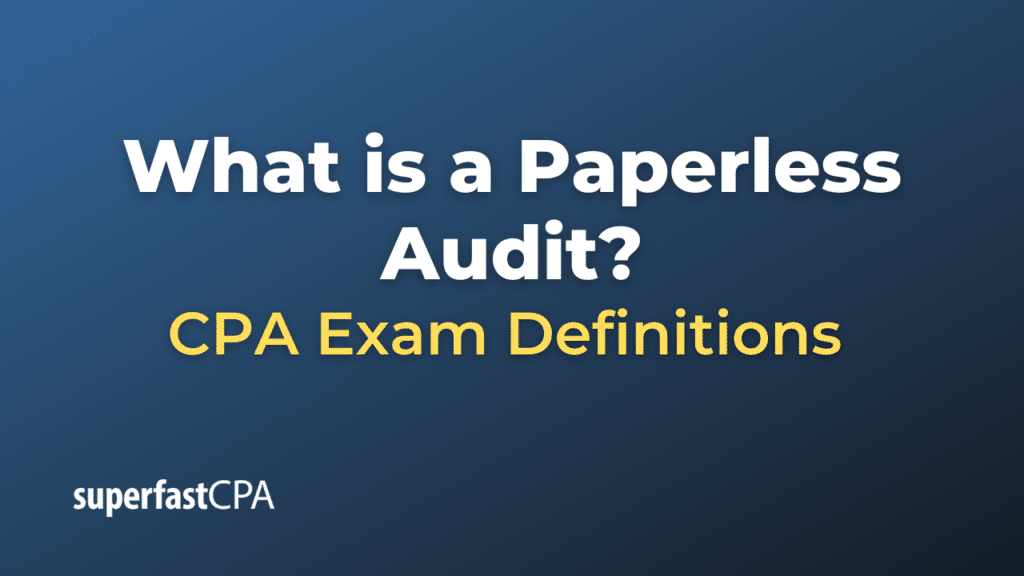Paperless Audit
A paperless audit, also known as a digital or electronic audit, is an audit process in which digital tools and technologies are used instead of traditional paper-based methods. This means that financial records are reviewed and analyzed electronically, and auditors use specialized software to facilitate their work.
The process typically involves the following steps:
- Digital Data Collection: The auditor collects financial data from the client in electronic form. This can include digital invoices, receipts, bank statements, and other financial documents.
- Data Analysis: The auditor uses auditing software to analyze the data and identify any discrepancies or anomalies that might indicate fraud or error.
- Documentation: The auditor creates electronic work papers to document the audit process and findings. These work papers can be easily updated, shared, and stored digitally.
- Reporting: The auditor generates an audit report using the auditing software. This report can be delivered to the client electronically.
Benefits of a paperless audit include:
- Efficiency: The use of digital tools can make the audit process faster and more efficient.
- Accuracy: Auditing software can help reduce human error in data analysis.
- Convenience: Paperless audits can be more convenient for both auditors and clients, as they can reduce the need for physical document collection and storage.
- Accessibility: Digital files can be accessed and shared more easily than paper files, facilitating collaboration and communication.
However, as with any digital process, paperless audits require secure systems to protect confidential financial data. Also, auditors need to be skilled in using digital tools and interpreting electronic data. The overall quality and effectiveness of a paperless audit depend on the reliability of the client’s digital financial records and the competency of the auditor in conducting a digital audit.
Example of a Paperless Audit
Suppose there’s a company, BrightTech Corp., which has decided to engage an audit firm for its annual financial audit. BrightTech Corp. uses a modern, cloud-based accounting system, so all its financial data is stored digitally.
Here are the steps the audit firm might take to perform a paperless audit:
- Digital Data Collection : First, the auditors will request access to BrightTech Corp.’s accounting system or ask for a digital copy of the financial data they need. This could include digital copies of the company’s financial statements, ledgers, invoices, receipts, and any other relevant documents.
- Data Analysis: Next, the auditors will import this data into their auditing software. The software will allow them to efficiently review and analyze the data. They can run various tests to identify any irregularities or discrepancies in the financial records.
- Documentation: Throughout the audit, the auditors will use the software to create digital work papers. These work papers will document the audit procedures performed, the evidence collected, and the auditors’ findings and conclusions.
- Communication: The auditors will use digital communication tools, such as email or a secure client portal, to communicate with BrightTech Corp. throughout the audit. This could include asking questions, requesting additional information, or discussing preliminary findings.
- Reporting: Once the audit is complete, the auditors will use their auditing software to generate a digital audit report. This report will present the auditors’ opinion on whether BrightTech Corp.’s financial statements present a true and fair view of the company’s financial position and performance. The auditors will deliver this report to BrightTech Corp. electronically.
This example demonstrates how a paperless audit can be an efficient, effective, and convenient way of conducting an audit. However, it also highlights the importance of secure and reliable digital systems to protect the integrity and confidentiality of the financial data.














